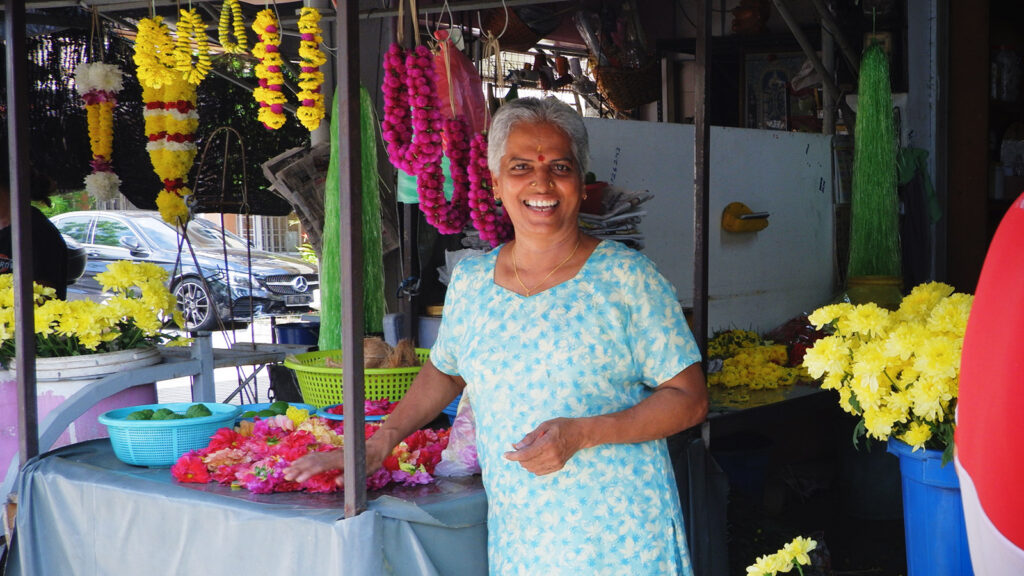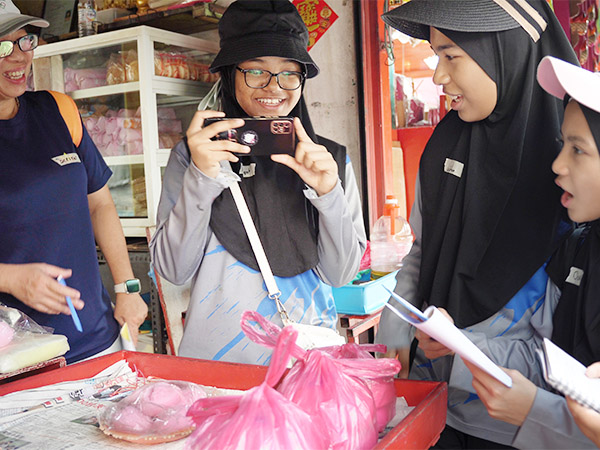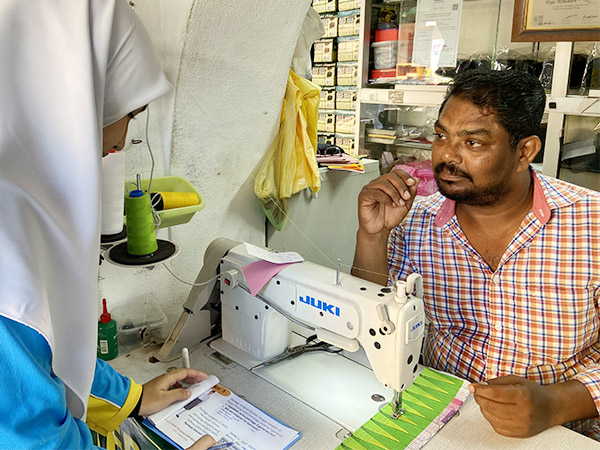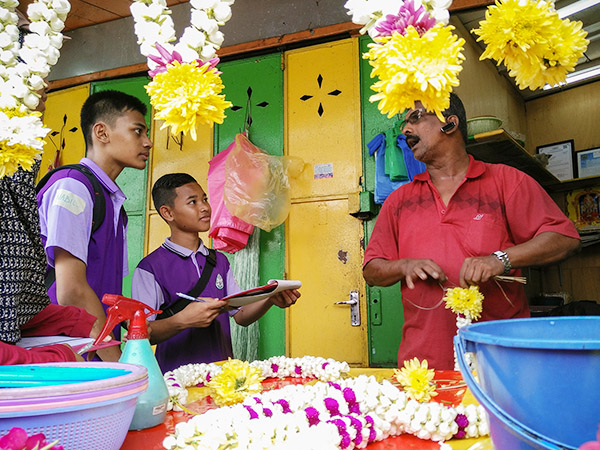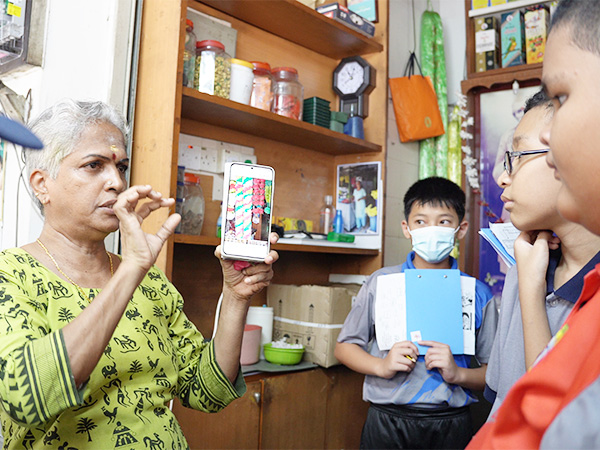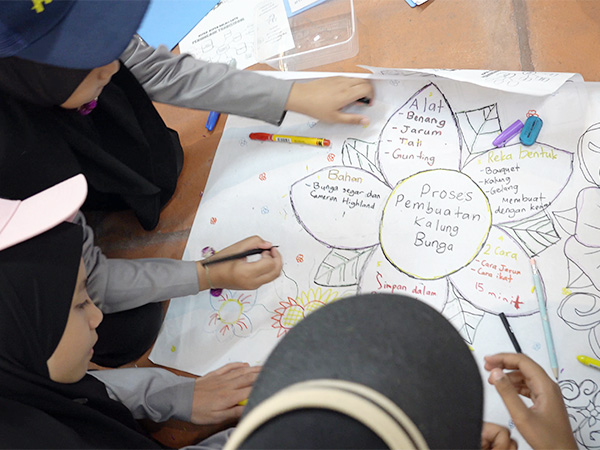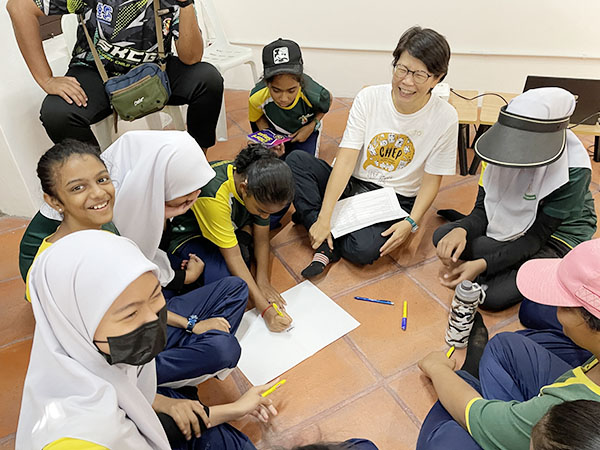Sustainability of Traditional Trades
Are traditional trades still relevant to our society today? Participants explore the flower garland-making trade’s historical and cultural context and making processes while developing their language skills.
Project at a Glance
Driving Questions
What is the significance of traditional trades in our society today?
Creative Medium
Infographic-making
Community
Flower garland traders
Participants
13–15 year olds
Human Resources
Flower garland trader who can teach participants flower garland-making
Timeframe
3 hours
Relevant Subjects
Languages, History, Social Studies

Knowledge
- Understand the background of the flower garland trade and trader and the flower garland-making process;
- Understand the functions and cultural significance of the flower garland.

Skill
- Create a flowchart that records the key steps of making a flower garland;
- Write a short description of the trader and the trade;
- Replicate or innovate a flower garland made by the flower garland trader.

Value
- Appreciate flower garland-making as a traditional trade and the skills needed to produce a flower garland.
- Appreciate the value of traditional trades
- Present the trader’s history and trade and the steps for making a flower garland to peers at school.
- Taught other students how to create a simple flower garland.
Suggested Activities:
- Share newfound flower garland-making skills with family, friends, and the school community, thus promoting awareness of a traditional trade.
- Create multimedia presentations or documentaries to share flower garland trade knowledge with the broader community.
- Initiate promotional campaigns to support local traditional traders, both the flower garland trade and beyond.
Context and Citizenship
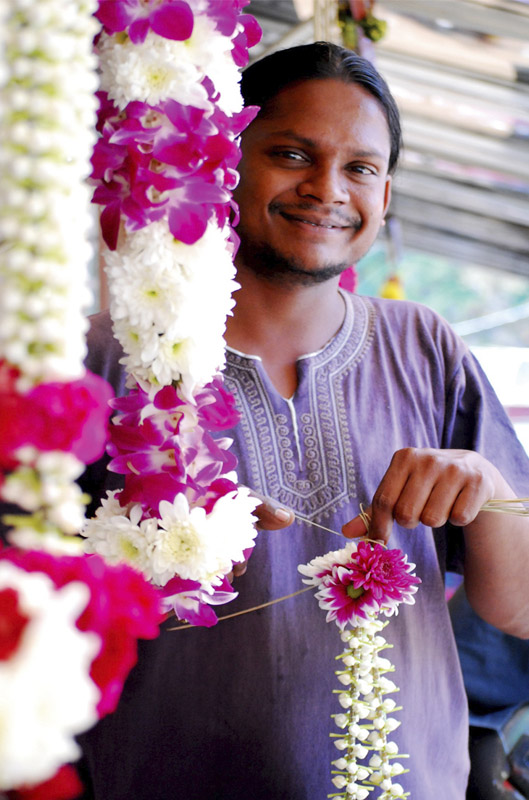
Flowers play a crucial role in Hinduism and its cultural traditions. They are often seen as garlands in homes and religious spaces such as temples, where they are presented as offerings to deities. Additionally, flower garlands are used in various other spiritual and cultural ceremonies for worship, decoration, and as a symbol of respect and blessing.
Flower garland-making is a long-standing trade passed down through generations of Indians who settled in Penang. Today, traders still sell these beautiful flower garlands around Jalan Masjid Kapitan Keling and near Hindu temples in the bustling heart of George Town. They cater to a diverse clientele, offering flower garlands for various cultural and religious events, including those celebrated by Hindus, Chinese, and other groups. However, the future of this traditional trade is uncertain due to a lack of interest in the craft and its related cultural traditions among the younger generation. The traditional garland is also facing competition from imported pre-made garlands.
Adapted Source: Sybrina Ng. (April 16, 2022). Vanishing Trades To Check Out On Your Next Penang Trip. https://zafigo.com/stories/zafigo-stories/20220416-vanishing-trades-artisan-traditional-heritage-penang/
Components of Learning
Activity 1 - Traditional Trades Exploration through Photo Hunt
To gauge participants’ understanding of traditional trades and to familiarise them with the site, participants explored the area in small groups and took photos of what they thought were traditional trades. After that, they chose 3 photos they took, shared them in the big group, and explained why they were considered traditional trades.
Activity 2 - Observation and Interview with a Flower Garland Trader
At the flower garland stall, participants looked closely at the entire flower garland-making process as the trader demonstrated and described each step. While observing and taking notes and photos, participants also asked questions about topics such as:
- the trader’s background: name, origin, how many generations have been involved in the trade; and
- the trade’s background: customer base, source of the flowers, functions and meanings of the flowers used.
Narrated demonstration of how to make a jasmine flower bracelet
Demonstration of how to make a flower garland.
Activity 3 - Hands-On Experience in Flower Garland-Making
Following the trader’s instructions, participants learned the unique tying technique and then created their own flower garlands. They also had a chance to try innovating on the existing flower garland by modifying certain steps.
Activity 4 - Flowchart Planning, Drawing, and Presentation
In their respective groups, participants shared and discussed the notes they had taken and wrote a short description of the trade and the trader, incorporating their hands-on experiences. They also created an infographic illustrating the process of making a flower garland. Each group then presented their infographic, short description, and unique flower garland creations.
Activity 5 - Reflection on the Significance of Traditional Trades Today
To reflect on their learnings regarding the flower garland-making trade and also the broader context of traditional trades, participants discussed questions like:
- What does it mean for a trade to be “thriving” or “dying”? Which category do you think flower garland-making falls into? How about other trades that you know?
- What does it mean for a trade to be “traditional”?
- Who is making the flower garlands? Will this affect the flower garland-making trade?
- How would different innovations to the flower garland-making trade affect the financial and cultural sustainability of the trade?
- Should we preserve traditional trades?
Activity 6 - Outreach to Other Schoolmates about Traditional Trades
Participants presented the history of the trader and trade, and the steps for making a flower garland to their schoolmates. They also taught other students how to create a simple flower garland.
How to Adapt

Community
What traditional trades in your local area could participants have hands-on experience with? It could involve the preparation of food or craft-making.

Creative Medium
Other than writing a short description and creating a flowchart, what mediums might be suitable to communicate their findings? You could explore video-making, photo-taking, or illustration.

Topic
What are some ways to deepen the participants’ learning? You could expand the focus onto other aspects of the flower garland-making trade, such as the design and business model, or compare the flower garland-making trade with other trades.
Originally conducted in Anak-Anak Kota.

